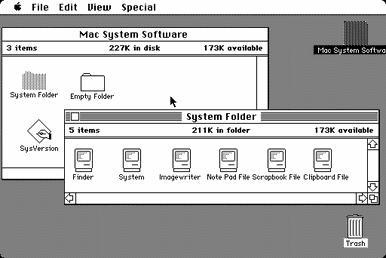History of Computers - GUI
The GUI (Graphical User Interface) is a method of interaction between the user and the computer using visual interfaces such as clicking icons and links and dragging objects with the mouse. Its intuitive use allows people to use computers faster and more easily than command line interfaces.
Page created by William Brown
Contents
Overview
Douglas Engelbart was the first person to implement a GUI. He is regarded as the father of the GUI. Before his invention of the GUI, Englebert worked as an engineer at NACA, the predecessor to NASA. Engelbart created the first mouse like object and used it to manipulate objects in a windowed GUI called NLS.[1] The first successful GUI was implemented in Apple's Macintosh computer in 1984, accompanied by a truly epic TV commercial.[2] The GUI attracted a new crowd of computer owners that were given the ability to operate a computer without formal training in command prompts. This helped expand the computers audience and eventually made the previous method of interacting with computers (batch processing) completely obsolete. Microsoft quickly followed suit with its own GUI, and GUIs quickly became standard.

Macintosh GUI screenshot
Significance
The GUI is significant because it allows a much more accessible form of interaction with a computer than via text based interfaces. The visual representation of computer programs and settings make a much more intuitive environment for the user. The GUI is also the foundation of multimedia computing, where the computer is used for entertainment rather than calculating. Without the GUI, the computer would not be as accessible and easy to use as it is today. [3]
Links